The Ultimate Guide to Choosing the Right Chainsaw
In today’s blog post, we will delve into the world of chainsaws and help you navigate through the various options available in the market. Understanding the different types of chainsaws is essential to make an informed purchase decision. We will then discuss how to determine your cutting needs and power requirements, ensuring that you choose a chainsaw that can handle your specific tasks. Safety features and ergonomics should not be overlooked when shopping for a chainsaw, as they play a crucial role in ensuring your safety. Additionally, we will explore the maintenance and durability factors that should be considered to ensure a long-lasting investment. Finally, we will guide you through comparing prices and selecting the perfect chainsaw that suits both your needs and your budget. So let’s get started and find the ideal chainsaw for your cutting needs!
Understanding the Different Types of Chainsaws
When it comes to choosing a chainsaw, it’s essential to understand the different types available in the market. Each type of chainsaw is designed for specific purposes and has its own advantages and disadvantages. By understanding the differences, you can make an informed decision and select the right chainsaw for your needs.
Listed below are the different types of chainsaws:
| Type | Advantages | Disadvantages |
|---|---|---|
| Gas-Powered Chainsaws | Powerful, long runtime, suitable for heavy-duty cutting | Require more maintenance, heavier, louder |
| Electric Chainsaws | Lightweight, quiet, easy to start, low maintenance | Dependent on power source, limited mobility |
| Battery-Powered Cordless Chainsaws | Quiet, lightweight, portable, low maintenance | Limited runtime, less power for heavy-duty tasks |
| Pole Chainsaws | Allows for reaching high branches, versatile | Less power, limited cutting capacity |
Gas-powered chainsaws are ideal for professional loggers or homeowners with extensive cutting needs. They provide plenty of power but require more maintenance. Electric chainsaws, on the other hand, are perfect for small to medium-sized jobs. They are lightweight and easy to handle, but you must have access to an electrical outlet.
Battery-powered cordless chainsaws are gaining popularity due to their portability and low maintenance. They are suitable for light to medium cutting tasks, but keep in mind their limited runtime. Finally, pole chainsaws are designed for reaching high branches without the need for a ladder. However, they have less cutting capacity and are not suited for heavy-duty cutting.
It is crucial to assess your cutting needs and power requirements before deciding on the type of chainsaw to purchase. Consider the size and type of trees you will be cutting, the frequency of use, and any other specific requirements you may have. By understanding the different types of chainsaws and their respective advantages and disadvantages, you can choose the one that best suits your needs and make your cutting tasks a breeze.
Determining Your Cutting Needs and Power Requirements
When it comes to choosing the perfect chainsaw, determining your cutting needs and power requirements is crucial. Different types of chainsaws are designed for specific tasks, and understanding your unique requirements will help you make the right choice. Whether you are a professional or a homeowner, considering the power and performance of the chainsaw is essential to ensure efficient cutting and a satisfactory end result.
Before making a decision, ask yourself what type of cutting tasks you will be performing. Are you planning to use the chainsaw for light pruning and trimming of trees in your backyard, or do you need a more heavy-duty machine for felling larger trees and cutting firewood? Identifying your cutting needs will help determine the appropriate size and power of the chainsaw required.
Additionally, it is essential to consider your power requirements. Electric chainsaws are suitable for lighter tasks and offer easy maneuverability and low noise levels. They are ideal for homeowners who need a chainsaw for occasional use. On the other hand, gas-powered chainsaws provide more power and are suitable for demanding tasks. They offer greater mobility but tend to be heavier and louder compared to electric chainsaws.
- Identify your specific cutting needs
- Evaluate the power requirements for your tasks
- Consider the size and weight of the chainsaw
- Determine whether an electric or gas-powered chainsaw is more suitable
By considering these factors, you can narrow down your options and select the ideal chainsaw that meets your cutting needs and power requirements. It is always recommended to compare different models and read customer reviews to ensure you are making an informed decision. Remember, choosing the right chainsaw will not only make your cutting tasks easier but also enhance your safety and efficiency.
| Type of Chainsaw | Cutting Needs | Power Requirements |
|---|---|---|
| Electric Chainsaws | Light pruning and trimming | Lower power output |
| Gas-powered Chainsaws | Felling larger trees, cutting firewood | Higher power output |
Evaluating Safety Features and Ergonomics
When it comes to choosing the perfect chainsaw, it is crucial to give equal importance to safety features and ergonomics. Working with a chainsaw can be hazardous, and having the right safety features can make a significant difference in reducing the risk of accidents. One essential safety feature to consider is an inertia-activated chain brake. This feature automatically stops the chainsaw’s chain movement in case of a kickback, minimizing the chances of injury. Additionally, a low kickback chain and bar can further enhance safety by reducing the risk of the chainsaw forcefully jerking back towards the operator.
Alongside safety features, ergonomics play a vital role in ensuring comfortable and efficient operation of a chainsaw. Look for chainsaws with anti-vibration technology as they can significantly reduce the fatigue and strain caused by prolonged use. A chainsaw with well-designed handles and grip can provide better control and reduce hand fatigue. Also, consider the weight distribution of the chainsaw. Opting for a balanced chainsaw will make it easier to maneuver and handle, minimizing the chances of accidents caused by operator fatigue.
It is important to note that different chainsaw models may offer varying safety features and ergonomics. Therefore, before making a purchase, carefully evaluate these aspects by comparing different brands and models. Create a checklist of essential safety features and ergonomic factors that matter to you and refer to it while researching and evaluating chainsaw options. Prioritizing safety and comfort will ensure you find the chainsaw that not only gets the job done effectively but also keeps you protected and comfortable throughout your cutting tasks.
Considering the Maintenance and Durability Factors
When it comes to purchasing a chainsaw, one of the vital aspects to consider is the maintenance and durability of the machine. Chainsaws are powerful tools designed to handle tough cutting tasks, but without proper care and maintenance, they can quickly lose their effectiveness and lifespan. Therefore, it is crucial to understand and evaluate the maintenance requirements and durability factors before making a final decision.
Maintenance
Regular maintenance is key to ensuring that your chainsaw remains in optimal working condition. This includes inspecting and cleaning the cutting components, such as the chain and bar, after each use. It is important to remove any debris, sawdust, or sap build-up that may affect the chainsaw’s performance. Additionally, you should regularly check and tighten the chain tension to prevent accidents and maintain efficient cutting. Keeping the air filters clean and properly lubricating the chainsaw’s moving parts are also essential maintenance tasks that should not be overlooked.
Durability
Another factor to consider when choosing a chainsaw is its durability. A durable chainsaw is built to withstand heavy-duty use and can withstand the wear and tear associated with demanding cutting tasks. Look for chainsaws constructed from high-quality materials, such as lightweight yet sturdy aluminum or magnesium alloy frames. Additionally, consider the design and construction of the chainsaw’s components, such as the handle and chain tensioning system. Look for features that enhance durability, such as anti-vibration technology and robust chain guards.
- Regular maintenance is essential for the proper functioning of a chainsaw.
- Inspect and clean the cutting components after each use.
- Ensure proper chain tension to prevent accidents.
- Maintain clean air filters and lubricate moving parts regularly.
- Choose a chainsaw made from durable materials like aluminum or magnesium alloy.
- Consider features such as anti-vibration technology and robust chain guards for improved durability.
| Maintenance | Durability |
|---|---|
| Regular inspection and cleaning of cutting components | Choose chainsaw made from durable materials |
| Proper chain tensioning | Consider features for enhanced durability like anti-vibration technology |
| Clean air filters and lubricate moving parts | Robust chain guards for protection |
In conclusion, before purchasing a chainsaw, it is essential to carefully consider the maintenance requirements and durability factors. Regular maintenance, such as inspecting and cleaning cutting components, as well as maintaining proper chain tension, is crucial for optimal performance. Additionally, choosing a chainsaw made from durable materials and equipped with features like anti-vibration technology and robust chain guards can significantly enhance its lifespan. By weighing these maintenance and durability factors, you can make an informed decision and select a chainsaw that will be both reliable and long-lasting.
Comparing Prices and Selecting the Perfect Chainsaw
When it comes to selecting the perfect chainsaw, one of the most important factors to consider is the price. Chainsaws can vary significantly in price, depending on the brand, features, and power. It’s essential to compare prices and find a chainsaw that not only fits within your budget but also meets your cutting needs. By doing thorough research and understanding the different options available, you can make an informed decision and find a chainsaw that offers the best value for your money.
Firstly, it’s important to evaluate your cutting needs and power requirements. Consider the type of tasks you will be using the chainsaw for. Will you primarily be cutting small branches and logs, or do you need a more powerful chainsaw for larger projects? Understanding your cutting needs will help determine the power output required for efficient and effective cutting. Additionally, consider the size and weight of the chainsaw. If you will be using it for extended periods, a lightweight and ergonomically designed chainsaw will be more comfortable and easier to handle.
Safety features and ergonomics should also be a top priority when comparing prices and selecting a chainsaw. Look for features such as a chain brake, anti-vibration system, and a guard to protect against kickback. These features are crucial for ensuring your safety while operating the chainsaw. Additionally, ergonomic handles and adjustable chainsaw bars can significantly reduce fatigue and improve control during cutting tasks. It’s worth investing in a chainsaw that prioritizes safety and offers optimal ergonomics to prevent accidents and promote a comfortable working experience.
- Research and understand the different types of chainsaws available, including gas-powered, electric, and battery-powered options.
- Consider the maintenance and durability factors of each chainsaw. Look for chainsaws with easy access to the chain tensioning mechanism and simple maintenance requirements.
- Compare prices from different retailers and manufacturers. Look for sales, discounts, and special offers to get the best deal.
- Take into account the warranty and customer support provided by the manufacturer. A reliable warranty and responsive customer service can give you peace of mind in case of any issues or concerns.
| Chainsaw Type | Pros | Cons |
|---|---|---|
| Gas-Powered | Powerful cutting ability, suitable for heavy-duty tasks. | Higher maintenance, noisy, and emits exhaust fumes. |
| Electric | Quiet operation, lower maintenance, and ideal for light to medium cutting tasks. | Dependent on electricity availability and limited mobility due to corded design. |
| Battery-Powered | Quiet operation, lower maintenance, and offers cordless mobility. | Less power compared to gas-powered chainsaws, limited battery runtime. |
By considering all these factors and comparing prices, you can find the perfect chainsaw that meets your cutting needs, while also fitting within your budget. Remember to prioritize safety, ergonomics, and durability, as well as understand the different types of chainsaws available. Take your time to research, read reviews, and weigh the pros and cons of each chainsaw model. Investing in a high-quality chainsaw will ensure efficient and reliable performance, making your cutting tasks easier and more enjoyable.
Frequently Asked Questions
What are the different types of chainsaws available in the market?
Chainsaws are available in various types, including gas-powered chainsaws, electric chainsaws, and battery-powered chainsaws.
How do gas-powered chainsaws differ from electric chainsaws?
Gas-powered chainsaws are typically more powerful and suitable for heavy-duty tasks, while electric chainsaws are quieter, lighter, and more suitable for lighter tasks.
How do I determine my cutting needs when choosing a chainsaw?
Consider the size and type of trees or wood you will be cutting, as well as the frequency and intensity of your cutting tasks.
What factors should I consider when determining the power requirements of a chainsaw?
Consider the bar length, engine power, and cutting speed required for your cutting tasks to ensure the chainsaw can handle the workload efficiently.
What safety features should I look for in a chainsaw?
Look for safety features such as chain brakes, anti-vibration systems, and safety throttle triggers to ensure safe operation.
How important is ergonomics when choosing a chainsaw?
Ergonomics play a crucial role in user comfort and fatigue reduction during long periods of use. Look for features like grip design and weight distribution.
What maintenance and durability factors should I consider when buying a chainsaw?
Consider factors such as ease of chain tensioning and sharpening, availability of replacement parts, and the overall build quality for long-term durability and ease of maintenance.
How can I compare prices when selecting a chainsaw?
It’s important to compare prices from different brands and retailers, considering the features and specifications offered by each chainsaw to get the best value for your money.

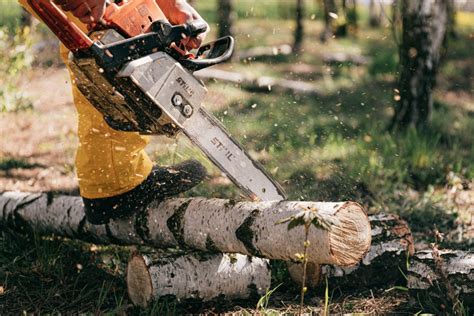




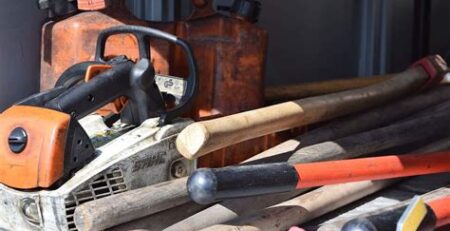
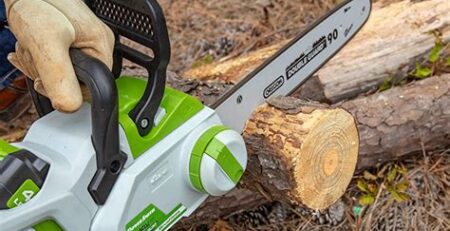
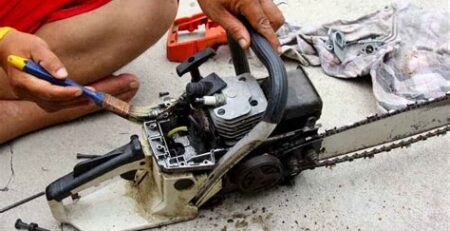


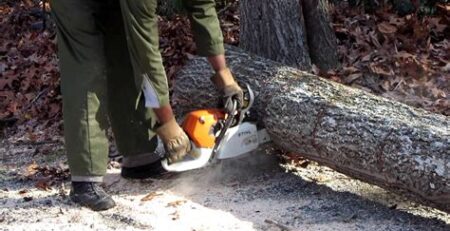

Comments (2)
thanks for info
thank you!